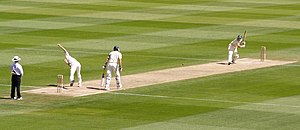Cricket Wireless is a popular prepaid carrier that offers a wide selection of free phones and high-end devices like the Cricket Wireless Galaxy S6 on plans that start at $35 a month for smartphones. Before you sign up for Cricket Wireless and spend money on a new phone there are some things you need to know about the service.
We’ll walk you through what Cricket Wireless plans offer, what you need to know about Cricket Wireless phones and other details that customers need to consider when choosing a new carrier. There is no Cricket Wireless In the last year Cricket Mobile gained more exposure thanks to a widespread commercials touting the $35 a month plan option that includes taxes and other fees in the base amount, taking the guess-work out of knowing how much you will pay each month.
iPhone 6, but there is an option to use the iPhone on this
What Phones are on Cricket?
The Cricket Wireless phones include a wide selection of smartphones from affordable and even free after rebate options to the latest and greatest like the Samsung Galaxy S6.
Cricket Wireless phones include Windows Phone, Android and iPhone, but not the latest iPhone 6.

The Cricket Wireless phones include many good options, but also bad choices.
Keep in mind that you get what you pay for, so some of the free phones will not come close to matching the experience of newer devices. Many of the cheapest Cricket Mobile phones are 4G only, which means slower speeds than those with 4G LTE. Keep this in mind if you plan to watch a lot of video or upload and download large files.
The best Cricket Wireless smartphones on sale now are;
- Motorola Moto E
- Samsung Galaxy S4
- iPhone 5c 16GB and 32GB
- Samsung Galaxy S5
- Samsung Galaxy S6
There are many other options that may perform well, but these devices are proven winners, even the older ones listed above.
Can I Use My Own Phone on Cricket Wireless?
Cricket Wireless lets users bring their own phone to use on the service, but you cannot just bring any phone.

Bring your own phone to Cricket Wireless if it is unlocked and runs on a GSM network.
For this to work you need an unlocked GSM smartphone. If you are on AT&T you are using a GSM smartphone and you can ask AT&T to unlock your phone after you meet contract stipulations. T-Mobile also uses GSM networks.
Advertisement
You can enter your phone’s IMEI number into the tool on this page to see if it will work with the Cricket Wireless network. If it does you need to buy a Cricket Wireless SIM card and plan. A SIM card is normally 4.99, but it is on sale for 99 cents for a limited time.
Cricket Wireless Plans

Pick the Cricket Wireless plan that fits you.
The most recognized Cricket Wireless plan is the Basic Smartphone plan that the company features in commercials for $35 with taxes and fees included. The plan is actually $40 a month, but if you sign up for auto-pay there is a $5 discount on each of these plans. Cricket Wireless plans include a Smart and a Pro option as well.
- Basic – 2.5GB 4G LTE, Unlimited talk and text – $40
- Smart – 5GB 4G LTE, Unlimited talk and text, PLUS – $50
- Pro – 10GB 4G LTE, Unlimited talk and text, PLUS – $60
The Smart and Pro Cricket Wireless plans include unlimited talk and messaging to Mexico and Canada and Unlimited International texting. This excludes the Northwest Territories of Canada.
Cricket Wireless Coverage Map
The Cricket Wireless coverage map shows a lot of coverage inside the U.S., including parts of Alaska and Hawaii. You can check your Cricket Wireless coverage using their
online tool, but in general the coverage matches AT&T.

The Cricket Wireless coverage map matches AT&T.
In early 2015 AT&T bought Cricket Wireless to turn the service into a premium pre-paid brand for the company. With this information we know that Cricket Wireless coverage matches AT&T, as they run on the same towers.
Cricket Wireless Speed Test




